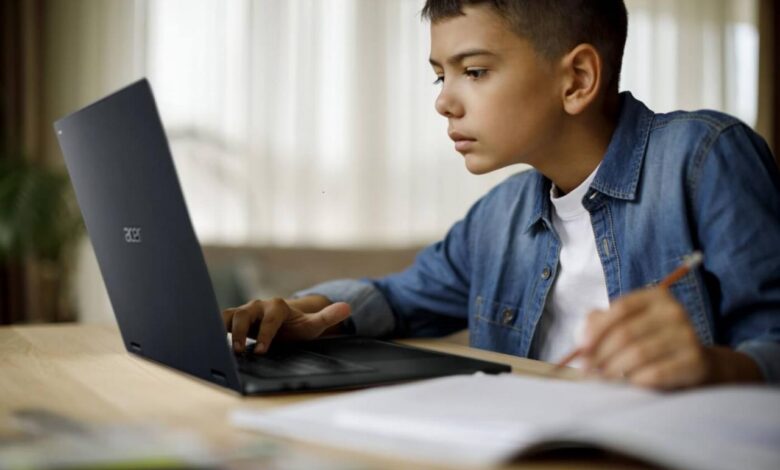How Community Learning Revolutionizes Modern Education

The landscape of education has undergone a massive transformation in recent years.
Students no longer learn in isolation behind closed textbooks.
Instead, they thrive in vibrant communities where knowledge flows freely among peers.
Research shows that collaborative learning environments lead to improved academic performance and higher satisfaction rates.
The traditional classroom model where one teacher speaks to rows of silent students is rapidly becoming obsolete.
Today’s learners crave connection, interaction, and the ability to learn from each other’s experiences.
This shift toward social learning isn’t just a temporary trend but a fundamental reimagining of how education works.
The power of community-driven education extends far beyond simple group projects or study sessions.
It creates lasting bonds that keep students engaged throughout their entire academic journey.
The Rise of Collaborative Learning Spaces
Digital platforms have made it easier than ever for students to connect.
Forums, discussion boards, and video chat rooms bring learners together across continents.
These virtual spaces mirror the organic conversations that once happened in campus coffee shops.
Students share resources, ask questions, and solve problems collectively.
The beauty of this approach lies in its accessibility.
A student in rural Montana can collaborate with peers in Tokyo and Mumbai.
Time zones become less of a barrier when asynchronous communication tools enter the picture.
Recording lectures and discussions means everyone participates on their own schedule.
The democratization of knowledge sharing has never been more apparent.
Why Traditional Education Falls Short
Lecture halls with hundreds of students create anonymity.
Nobody notices when you skip class or stop paying attention.
The lack of personal connection leads to disengagement.
Students feel like numbers in a system rather than valued individuals.
Traditional grading systems emphasize competition over cooperation.
Classmates become rivals fighting for the top spots on a curve.
This competitive atmosphere destroys the potential for meaningful collaboration.
Fear of appearing unintelligent prevents students from asking important questions.
The result is a lonely, stressful educational experience that pushes many to drop out.
Building Small Academic Families Within Large Institutions

Cohort models create tight-knit groups within sprawling universities.
Students take multiple classes together, building familiarity and trust.
These academic families provide emotional support during challenging times.
When one member struggles, others step in to help.
The bonds formed in these communities often last beyond graduation.
Professional networks emerge naturally from these early connections.
Alumni continue supporting each other throughout their careers.
Mentorship relationships develop between upper and lower classmen.
The sense of belonging transforms the entire college experience.
Mobile Learning Keeps Students Connected
Smartphones enable learning anywhere, anytime.
Students participate in discussions while commuting or waiting in line.
Quick questions get answered in minutes rather than days.
Mobile accessibility increases student engagement by 41%.
Push notifications remind students of upcoming deadlines and discussions.
The constant connection prevents anyone from feeling left behind.
Classmates become available resources at the tap of a screen.
This immediacy creates momentum that keeps students moving forward.
The Psychology Behind Social Learning
Humans are inherently social creatures.
We learn best when we can observe and imitate others.
Watching peers solve problems provides concrete examples to follow.
Explaining concepts to others reinforces our own understanding.
The act of teaching deepens knowledge in ways passive listening cannot.
Social pressure creates accountability that personal discipline sometimes lacks.
When your study group expects you to contribute, you show up prepared.
Celebrating successes together multiplies the joy of achievement.
Shared struggles create empathy and reduce feelings of inadequacy.
Creating Safe Spaces for Vulnerability
Learning requires admitting what you don’t know.
This vulnerability becomes easier in trusted communities.
Students feel comfortable asking “stupid questions” among friends.
The realization that everyone struggles with similar concepts reduces anxiety.
Peer feedback often lands better than criticism from authority figures.
Classmates offer suggestions without the power dynamic of teacher evaluations.
This psychological safety encourages risk-taking and experimentation.
Mistakes become learning opportunities rather than embarrassments.
The culture shifts from perfectionism to growth mindset.
Diverse Perspectives Enhance Understanding
Every student brings unique life experiences to the table.
These varied backgrounds create richer discussions and deeper insights.
A business concept might be understood differently by someone from a different culture.
Multiple viewpoints challenge assumptions and broaden thinking.
Homogeneous groups often develop blind spots.
Diverse communities naturally expose these hidden biases.
Students learn to appreciate complexity and nuance.
The ability to consider multiple perspectives becomes a valuable life skill.
This diversity preparation benefits students in future workplaces.
Technology Tools That Facilitate Connection
Discussion platforms like Discord and Slack organize conversations by topic.
Video conferencing tools bring face-to-face interaction to remote learning.
Collaborative documents allow real-time group work on assignments.
Polling features gauge understanding and gather quick feedback.
Breakout rooms in virtual classrooms create small group discussions.
Screen sharing enables peer-to-peer tutoring sessions.
Recording capabilities let absent members catch up asynchronously.
Integration with learning management systems keeps everything centralized.
These tools remove technical barriers to collaboration.
The Role of Facilitators in Community Learning

Instructors become guides rather than sole knowledge sources.
Their job shifts to creating conditions where peer learning thrives.
Good facilitators ask questions that spark debate and curiosity.
They model respectful disagreement and constructive criticism.
Moderating discussions prevents dominant voices from overtaking conversations.
Ensuring quieter members contribute requires intentional strategies.
Sometimes the best teaching move is strategic silence.
Allowing students to struggle together builds problem-solving resilience.
Facilitators celebrate community achievements, not just individual excellence.
Measuring Success Beyond Test Scores
Retention rates tell a powerful story about engagement.
Students who feel connected stay enrolled through challenges.
Graduation rates rise when communities provide support networks.
Career outcomes improve through the professional connections formed.
Student satisfaction surveys reveal the emotional impact of belonging.
Mental health metrics show reduced anxiety and depression.
Alumni giving rates indicate long-term appreciation for the experience.
Employer feedback about soft skills reflects collaborative training.
These holistic measures capture education’s true value.
Competency-Based Learning Changes the Game
Skills-based hiring prioritizes what candidates can do over traditional degrees.
Employers increasingly value demonstrated abilities over prestigious university names.
This shift aligns perfectly with community learning approaches.
Portfolios showcasing collaborative projects prove real-world readiness.
Peer endorsements carry weight as authentic skill validations.
Traditional transcripts fail to capture teamwork and communication abilities.
Competency badges earned through community challenges tell richer stories.
Nearly two-thirds of employers now use skills-based hiring practices.
The credential revolution rewards practical experience over theoretical knowledge.
Micro-Credentials Reflect Modern Learning Paths
Short courses focused on specific skills gain employer recognition.
Digital badges verify competencies in measurable ways.
Students collect credentials throughout their lifetimes, not just during four college years.
This modular approach allows career pivots and continuous learning.
Learning communities form around specific skill development goals.
Bootcamps and certificate programs emphasize hands-on practice.
Industry professionals join educational communities as mentors.
The lines between education and workplace training blur.
Lifelong learning becomes the norm rather than the exception.
Project-Based Learning Builds Practical Skills

Abstract theories come alive through real-world applications.
Group projects simulate workplace team dynamics.
Students negotiate roles, manage conflicts, and meet deadlines together.
These soft skills matter as much as technical knowledge.
Presentation to peers builds communication confidence.
Constructive feedback loops improve work quality iteratively.
Failed projects teach resilience when communities support recovery.
Success celebrations strengthen team bonds.
Portfolios of completed work impress future employers.
The Economics of Community-Driven Education
Peer tutoring reduces the need for expensive private help.
Resource sharing cuts textbook and material costs.
Study groups eliminate redundant individual effort.
Crowdsourced knowledge creates comprehensive study materials.
Alumni networks provide career opportunities without recruitment fees.
The return on investment extends beyond financial calculations.
Friendships and support systems offer immeasurable value.
Mental health benefits reduce medical costs.
Community education proves both effective and economical.
Overcoming Challenges in Virtual Communities
Screen fatigue presents real physical and menta






